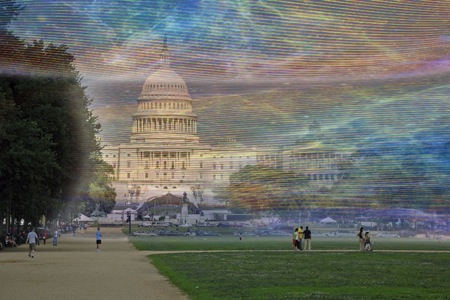What Does Municipal Wi-Fi Look Like?
Wi-Fi is everyone’s favorite technology, whether they realize it or not. It connects us to friends and co-workers, powers our homes and offices, and prevents mobile users from running up their monthly data bill. Without Wi-Fi, our mobile hardware and software is rendered nearly useless.
Many cities have experimented with municipal Wi-Fi in the form of mesh networks. New York City, for example, provides free Wi-Fi at more than 40 parks, and Newton, N.C., has more than 100 access points spread throughout the city. Just last year, San Jose, Calif., invested $94,000 to build a new outdoor 802.11n mesh network, with most of the 40 nodes attached to light poles.
Until now, Wi-Fi has been invisible to the human eye. Marilyn Browning Vogel, a former NASA employee and a current science professor at Ohlone College in San Francisco; and Nickolay Lamm, an artist, are helping people visualize this technology. The images below are a beautiful representation of a technology that is constantly surrounding all of us. Lamm explains on MyDeals.com:
Wi-Fi waves travel through space as rapid, data encoded pulses or waves. A freeze frame of these pulses would show that the pulses are about 6 inches apart (as shown by the lightly colored bands traveling through space in this image). Wifi routers are basically antenna that can send data over multiple frequencies all at the same time. These multiple frequencies are shown as blue, green, yellow, and red colors that pervade the space around the mall. The data from these multiple frequencies swirls around in space as shown here, but can be translated using a common tag system understood by wireless devices.




All images courtesy of Nickolay Lamm, MyDeals.com.







